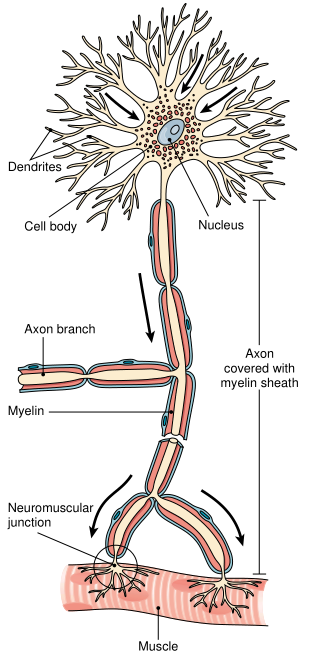The neuron is the basic functional unit of the nervous system (Fig. 1). Each neuron has two types of fibers extending from the cell body: the dendrite, which carries impulses toward the cell body, and the axon, which carries impulses away from the cell body.

FIGURE 1. A motor neuron. The break in the axon denotes length. The arrows show the direction of the nerve impulse.
Some axons are covered with myelin, a whitish, fatty material that insulates and protects the axon and speeds electric conduction. Axons so covered are described as myelinated, and they make up the white matter of the nervous system. Unmyelinated tissue makes up the gray matter of the nervous system.
Each neuron is part of a relay system that carries information through the nervous system. A neuron that transmits impulses toward the CNS is a sensory neuron; a neuron that transmits impulses away from the CNS is a motor neuron. There are also connecting neurons within the CNS. The point of contact between two nerve cells is the synapse. At the synapse, energy is passed from one cell to another by means of a chemical neurotransmitter.
责任编辑:admin
上一篇:医学文章阅读——Divisions of the Skeleton
下一篇:医学文章阅读——Clinical Aspects of Vision

微信公众号搜索“译员”关注我们,每天为您推送翻译理论和技巧,外语学习及翻译招聘信息。